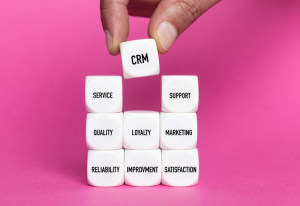
Customer Journey Mapping and Customer Relationship Management (CRM) are two important tools used in business to enhance customer satisfaction and experience. While they serve different purposes, they have a lot in common, as both are focused on understanding and improving the customer’s journey with a brand. In this article, we will explore what Customer Journey Mapping and CRM have in common and how they complement each other.
Customer Journey Mapping
A Customer Journey Map is a visual representation of the customer’s experience with a brand or product. It tracks every interaction between the customer and the brand, from the initial discovery phase through to purchase and post-purchase support. The map helps businesses to understand the customer’s experience at each touchpoint and identify areas for improvement. By gaining insight into the customer’s needs and pain points, businesses can develop a more effective marketing and sales strategy.
Customer Relationship Management
Customer Relationship Management (CRM) is a technology that allows businesses to manage their customer interactions and relationships. It tracks every touchpoint with the customer, including email communications, phone calls, social media interactions, and more. CRM helps businesses to keep track of customer data, such as purchase history, preferences, and feedback. This data can be used to develop targeted marketing campaigns, improve customer service, and drive business growth.
What do they have in common?
The main similarity between Customer Journey Mapping and CRM is that both are focused on understanding and improving the customer’s experience with a brand. Both tools help businesses to collect data about customers, including their preferences, needs, and pain points. This data can then be used to improve the customer’s experience and enhance customer satisfaction.
Additionally, both Customer Journey Mapping and CRM can help businesses to identify areas for improvement. By analyzing data from customer touchpoints, businesses can identify pain points in the customer journey and develop strategies to address them. For example, if a customer frequently contacts customer support, businesses can investigate the underlying issue and make changes to reduce the need for support calls.
How do they complement each other?
Customer Journey Mapping and CRM are complementary tools that work together to improve the customer’s experience. By using a CRM system to collect data about customer interactions, businesses can develop a more accurate Customer Journey Map. This map can then be used to identify areas for improvement and develop targeted marketing campaigns that are tailored to the customer’s needs.
Similarly, by using a Customer Journey Map to identify pain points in the customer journey, businesses can make changes to their CRM system to address those issues. For example, if customers frequently complain about a lack of communication, businesses can use their CRM system to send regular updates and notifications to keep customers informed.
Conclusion
Customer Journey Mapping and CRM are both powerful tools for understanding and improving the customer’s experience. While they serve different purposes, they have a lot in common, as both are focused on collecting data about customer interactions and using that data to improve customer satisfaction. By using these tools together, businesses can gain a better understanding of their customers and develop effective strategies for driving growth and success.




